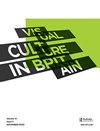‘The Making of the Future: Now’: Edinburgh Art Festival
Q2 Arts and Humanities
引用次数: 0
Abstract
In spite of his international legacy, Patrick Geddes is perhaps not so well known outside Scotland. Born in 1854, the biologist and botanist turned sociologist, turned town planner and experimental pedagogue, conducted work at home and overseas, establishing schools, universities and city plans in France, India, Israel and Palestine. In Edinburgh, the Aberdeenshire-born polymath is perhaps most remembered for his impact on the city’s Old Town. In the mid-nineteenth century, when the area was a slum crippled with poverty and disease, Geddes moved his family into a tenement just off the Royal Mile. From this base, Geddes set about his method of tackling urban poverty: ‘conservative surgery’. Instead of entirely demolishing and clearing the area to rebuild from scratch, he suggested that existing space should be ‘opened out’ to let in light and air: a botanist’s take on city planning. In practice, this was achieved through removing selected tenements in order to create small squares or courtyards; windows could then be added to the newly exposed walls, and gardens planted in the new spaces opened up. The myriad hidden gardens, closes and courtyards peppered throughout the Old Town are testament to this. Founded in 2004, Edinburgh Art Festival is one of the major programmes existing within the city-wide palimpsest of alternative, fringe and satellite festivals. 2017 saw the alignment of two anniversaries: seventy years of the Edinburgh International Festival, and one hundred years since Geddes’ 1917 publication The Making of the Future: A Manifesto and a Project, from which the art festival takes its title. In this text, written in the middle of the First World War and looking forward to its end, Geddes laid out his vision for a new holistic society in which ‘Art and Industry, Education and Health, Morals and Business must . . . advance in unison’. The rubric of ‘inter-disciplinarity’ finds its intellectual precursor in Scottish Generalism; Geddes believed in a ‘synthesised’ intellect as opposed to what he saw as a veer towards increased specialization of disciplines. Edinburgh Art Festival’s invocation of Geddesian ideals is two-fold. Through programming projects from Scottish and international artists it seeks to reinforce an outward-looking Scotland (particularly pertinent to current independence debates, in which an independent Scotland might seek EU membership), and calls to mind a phrase that is also Geddesian in origin: ‘think local, act global’. The commissions programme treads the same turf by ‘opening out’ venues in the Old“创造未来:现在”:爱丁堡艺术节
尽管帕特里克·格迪斯(Patrick Geddes)在国际上享有盛名,但他在苏格兰以外的地区可能并不那么知名。这位1854年出生的生物学家、植物学家、社会学家、城市规划师和实验教育家,在国内外开展工作,在法国、印度、以色列和巴勒斯坦建立了学校、大学和城市规划。在爱丁堡,这位出生在阿伯丁郡的博学之士最让人铭记的可能是他对这座城市老城区的影响。在19世纪中期,当这个地区还是一个贫困和疾病肆虐的贫民窟时,格迪斯把家搬到了皇家英里大道附近的一套廉价公寓里。在此基础上,格迪斯开始着手解决城市贫困问题的方法:“保守手术”。他建议现有的空间应该“开放”,让光线和空气进入,而不是完全拆除和清理该区域,从零开始重建:植物学家对城市规划的看法。在实践中,这是通过拆除选定的公寓来创建小广场或庭院来实现的;然后可以在新暴露的墙壁上添加窗户,并且在新空间中种植花园。无数隐藏的花园,封闭和庭院遍布整个老城都证明了这一点。爱丁堡艺术节成立于2004年,是全市范围内另类、边缘和卫星艺术节的主要项目之一。2017年迎来了两个周年纪念日:爱丁堡国际艺术节成立70周年,以及格迪斯1917年出版的《创造未来:一个宣言和一个项目》100周年,艺术节由此得名。在这篇写于第一次世界大战中期并期待着战争结束的文章中,格迪斯提出了他对一个全新的整体社会的愿景,在这个社会中,“艺术与工业、教育与健康、道德与商业必须……”一起前进”。“跨学科”的标题在苏格兰通论中找到了它的智力先驱;格迪斯相信“综合”智力,而不是他所看到的学科日益专业化的转变。爱丁堡艺术节对哥德斯理想的召唤是双重的。通过来自苏格兰和国际艺术家的节目项目,它试图加强一个外向型的苏格兰(特别是与当前的独立辩论有关,独立的苏格兰可能会寻求加入欧盟),并让人想起一句源于格德斯的短语:“思考本地,行动全球”。委员会的计划是通过“开放”旧场馆来涉足同样的领域
本文章由计算机程序翻译,如有差异,请以英文原文为准。
求助全文
约1分钟内获得全文
求助全文
来源期刊

Visual Culture in Britain
Arts and Humanities-Visual Arts and Performing Arts
CiteScore
0.60
自引率
0.00%
发文量
1
 求助内容:
求助内容: 应助结果提醒方式:
应助结果提醒方式:


